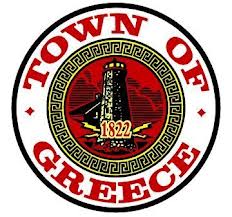By Joyce S. Dubensky

NEW YORK (Press Release)— What should religious inclusion look like? Given the overwhelming diversity of beliefs, can we only be religiously inclusive by becoming completely secular? Or can we somehow be representative of all faiths?
This week, the Supreme Court announced its decision in Town of Greece v. Galloway. The case involved a challenge to the town of Greece and its regular practice of opening legislative sessions with Christian prayers. Though the prayers were given by a rotating group of volunteer prayer leaders, they were overwhelmingly Christian-led, reflecting the composition of the town and its places of worship. The Court decided that Greece’s practices, which did not intentionally exclude any belief, were within its constitutional rights and did not violate the Establishment Clause of the First Amendment.
What is important about this case is that it sets a legal – and baseline – threshold for what it means to embrace the values of a country that stands for freedom of belief and for life, liberty and the pursuit of happiness for all of its people. But let us not conflate what can be done in the eyes of the law with what should be done to further our national values by eliminating bias, defusing escalating social tensions, and fostering respect.
In Town of Greece v. Galloway, the challengers initially sought to require the opening legislative invocations to be “inclusive and ecumenical” prayers that referred only to a “generic God.” Such non-denominational prayers are appropriate and effective in many situations. However, in this specific case, the court found that they were not mandated, stating: “The town of Greece does not violate the First Amendment by opening its meetings with prayer that comports with our tradition and does not coerce participation by nonadherents.”
The Supreme Court acknowledged the current practice as within the law. Now, we must identify what should be done and the better practices for religious inclusion.
So, I ask the question again, what does religious inclusion look life if it’s not an “all or nothing” system?
Religious inclusion is about how we treat one another day in and day out. It looks like open channels of communication, willingness to listen to others, reevaluation of long-standing traditions, appreciation of our commonalities and respect for our differences. It is a mindset and an admittedly evolving process, not a stagnant set of “do’s and do not’s” or a checklist that can be quickly completed.
Religious inclusion in the Town of Greece could take many forms. It could be a simple statement to start off all meetings that acknowledges respect for individuals of all faiths and none. It could be outreach to and engagement of prayer leaders from diverse communities of faith. With ease, Greece could implement an active selection method for identifying prayer givers – one that proactively invites the participation of atheists, agnostics and diverse spiritual voices and is assessed and revised annually (rather than relying on a dated list of volunteers who have accepted invitations in the past, as the town currently does).
That said, it would be a fool’s errand to ask the town to proactively find clergy and spokespeople from every single faith, tradition, and walk of life. Even the Christian clergy presently volunteering do not begin to represent the vast diversity within Christian traditions – let alone the vast diversity of beliefs within our nation. But that doesn’t mean that more diverse voices could not easily be found in nearby Rochester, NY or elsewhere – and it would be a better practice to do so.
These small steps would move the needle while still creating an environment in which the public can attend hearings comfortably, talk about issues of local concern, and participate in the critically important process of legislative policy making.
The Town of Greece won its case. Now, Tanenbaum respectfully asks for more.
**
Joyce S. Dubensky, J.D., is the chief executive officer of the Tanenbaum Center for Interreligious Understanding